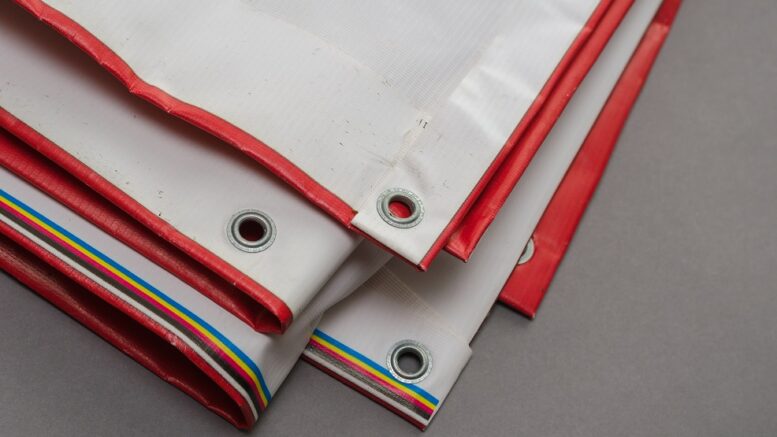Crafters and medical professionals are flocking to heavy vinyl fabric for its toughness and adaptability, making it a hot material these days.
But this shiny, plastic-like stuff throws some curveballs at those who want to sew with it. There are special tricks to working with vinyl to make sure every project turns out amazing and stands the test of time.
That’s where learning the ins and outs of how to sew vinyl fabric comes in!
Understanding Vinyl Fabric
Vinyl fabric encompasses a range of materials made with plastic, like PVC and faux leather. Its water-resistant and easy-clean qualities make it popular for many projects. However, sewing vinyl requires special care due to its unique properties.
Unlike natural fabrics, vinyl doesn’t breathe and can be sticky, often getting caught on itself or sewing machine parts. This can make working with it tricky for beginners. Learning how to sew vinyl fabric involves learning specific techniques and using the right tools. With practice, even newcomers can master sewing vinyl.
The process can be smooth and rewarding once someone understands the material’s quirks. Proper preparation and patience are essential to successfully working with this versatile fabric.
Tools and Materials Required
Successful vinyl sewing projects require specific tools and equipment. A sewing machine that handles thicker materials is essential, as vinyl can be pretty dense.
Specialized presser feet, such as a Teflon or non-stick foot, a roller foot, or a walking foot, can significantly improve the sewing experience by preventing the vinyl from sticking to the machine.
Other essential tools include:
- Sharp, heavy-duty needles (size 90 or denim/leather needles)
- Polyester thread for strength and durability
- Sewing clips instead of pins to avoid permanent holes
- A chalk marker for temporary markings
- A finger presser or seam roller for flattening seams without heat
Preparation and Cutting Techniques
Preparing vinyl fabric for sewing requires careful handling. Unlike natural fabrics, vinyl doesn’t typically need pre-washing or ironing. However, it may need to be gently warmed or hung to remove creases from storage.
When cutting a fabric like vinyl, sharp scissors or a rotary cutter with a fresh blade are recommended to ensure clean edges.
It’s crucial to avoid using pins when working with vinyl, as they leave permanent holes. Instead, pattern weights or sewing clips can hold pieces in place. Marking the fabric should be done with chalk or erasable fabric markers to prevent permanent marks.
Sewing Techniques and Tips
When sewing vinyl fabric, several techniques can help achieve professional-looking results. Setting the sewing machine to a longer stitch length, around 3mm, helps prevent perforation and weakening of the seams.
Lowering the presser foot pressure can also reduce the risk of the vinyl sticking or bunching up during sewing.
One effective method for sewing vinyl is to place tissue paper between the fabric, the presser foot, and the needle plate. This reduces friction and helps the vinyl move smoothly through the machine. The paper can be easily torn away after sewing.
Backstitching should be avoided with vinyl, as it creates additional holes that can weaken the material. Instead, leaving long thread tails and tying them off manually is recommended for securing seams.
When joining multiple layers of vinyl, a walking foot can be beneficial in ensuring the even feeding of the material.
Applications in Medical and Fashion Industries
Due to its unique properties, vinyl fabric has extensive use in the medical and fashion industries. Vinyl is often used in medicine to create waterproof covers, protective gear, and easy-to-sanitize equipment covers. Its non-porous nature makes it ideal for environments where cleanliness is paramount.
In fashion, vinyl is popular for creating statement pieces such as raincoats, handbags, and accessories. Its ability to mimic the look of leather while offering water resistance and easy maintenance makes it a versatile option for designers and buyers.
Enhancing Sewing Skills with Vinyl Fabric
Mastering the art of sewing vinyl fabric opens up a world of creative possibilities. From fashionable accessories to practical medical applications, vinyl offers durability and versatility that few other materials can match.
By understanding the unique properties of vinyl and employing the proper techniques and tools, sewers can create professional-quality products that stand the test of time.
As with any new sewing skill, practice and experimentation are crucial to becoming proficient in working with vinyl. Beginning with small projects and steadily advancing to more complex designs allows for developing technique and confidence.

